Lama Tsongkhapa’s Enlightened Wisdom, Compassion and Activity: Śrīmat Tsongkhapa Stutiḥ श्रीमत् त्सोङ्खप स्तुतिः – Sanskrit Migtsema Sung by @3GemsBand
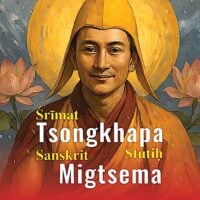
Why is the Migtsema of Lama Tsongkhapa a Daily Practice for many Buddhists? What is the Tibetan Migtsema in Sanskrit and English? In what way is it a complete practice of Buddhist Wisdom, Compassion and Enlightened Activity? Why does the Śrīmat Tsongkhapa Stutiḥ or the Migtsema honor the great sage of the land of snows as none other than the embodiment of Avalokiteshvara, Manjushri and Vajrapani in one? We answer these questions and more in this short feature, and end with the beautifully chanted Śrīmat Tsongkhapa Stutiḥ the Sanskrit Migtsema, performed by the 3 Gems Band together with Lama Tsongkhapa’s name mantra.
Humble Monk of Onion Valley
How did a humble monk from the Tsongkha valley of Amdo province in northeast Tibet, rise to become recognized as none other than the embodiment of the compassion of Avalokiteshvara, the wisdom of Manjushri, and the activity and power of Vajrapani? In what way can we consider him inseparable from the Three Bodhisattvas? Why is he also called the Buddha from the land of Snows?
3 Gems Band beautiful composition and singing of the Śrīmat Tsongkhapa Stutiḥ श्रीमत् त्सोङ्खप स्तुतिः – Sanskrit Migtsema:
Born in 1357 in the “Onion Valley” of Amdo, he would later be known by the name Losang Drakpa, or just simply as Lama Je Tsonghapa. His Dharma name, celebrated in his name mantra is Sumati Kīrti.
Four Great Deeds
By the age of eight, he was ordained a monk. By the age of sixteen, he had already studied with over fifty teachers, who were astonished by is intellectual gifts and realizations. Wherever the youth went, his light of wisdom glowed like a shining beacon. What was the source of his great Enlightened wisdom? None other than Manjushri, the Bodhisattva of Wisdom. Over the course of his astonishing life, Lama Tsongkhapa had direct visions and experience with Manjushri.
His realizations led to a new and clearer understanding of the true nature of reality. He is famous for his four great deeds, but even more so for his extensive written commentaries, teachings and guidance.
His final great deed is the best known. He established the Ganden Monastery, and the Gelugpa lineage. His life exemplified all three of the Great Bodhisattva’s insights.
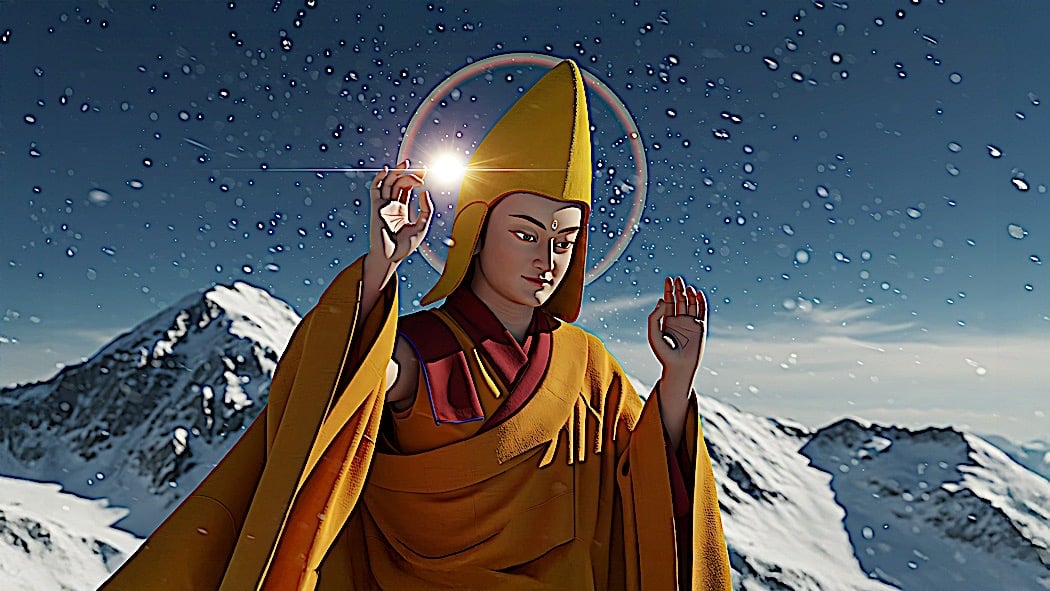
The 3 Great Bodhisattvas
The wisdom of Manjushri manifested in his extensive library of Enlightened written teachings. He is also famous for great debates, a discipline he largely revived in the monastic teaching system. He debated every famous teacher from India, Tibet and other countries who famously came to challenge him.
The compassion of Avalokiteshvara we saw in his tireless compassionate conduct. He famously donated every penny in his possession to the establishment of the Great Prayer Festival in Lhasa, which even today, begins each lunar New Year.
The power of Vajrapani we see manifested in a lifetime of activities, building an entire lineage, rebuilding monastic practice, and a scope of scholarly Buddhist teachings that even today are taught to countless students.
Paranirvana in 1419
He attained clear light and paranirvana in 1419, after which his students continued to receive teachings from him in visions. He is called the “Buddha from the Land of Snows” — the one who became fully Enlightened who was born in Tibet.
We honor the life of the Enlightened Tsongkhapa as none other than the embodiments of Avalokiteshvara, Manjushri and Vajrapani, with his mantra praise. In Sanskrit, this mantra praise translates as Śrīmat Tsongkhapa Stutiḥ. In English, we’d call this “praise to Glorious Tsongkhapa.”
For many students, this is an entire daily practice, or the way we start our other practices, such as our personal Yidam practice. We begin by praising the embodiment of the Three Bodhisattvas, Lama Je Tsongkhapa.
Practicing the Migtsema or Śrīmat Tsongkhapa Stutiḥ is the same as practicing all three of the Great Bodhisattvas. The Enlightened Buddha from the Land of Snows embodied all three.
Although the Migtsema is most often chanted in Tibetan, and sometimes in English, we honor the great Sage of the Land of Snows here with his Sanskrit praise. The 3 Gems Band sings the praise here, together with his name mantra, in beautiful celebration of the Sage from the Land of Snows, Je Tsongkhapa.
Before they begin, we translate the Sanskrit praise mantra to English.
The first line translates as “You are the Compassion of Avalokiteshvara, to you I prostrate.”
In Sanskrit this is:
Nirālambā mahā-karuṇā Avalokēśa namō’stutē
The next line translates as: “You are the wisdom of Lord Manjushri, to you I prostrate.”
In Sanskrit this is:
Vimala-jñāna-mahēśāya Mañjughoṣāya taṭ hiva
The third praise line translates as: “You are the Power of Vajrapani, Destroyer of the Maras, to you I prostrate.”
In Sanskrit:
Sakala-māra-sainyaugha- vidhvānsāya Vajradharē
After the three praises, we pay homage to Lama Tsongkhapa in this way: “You are the Crown Jewel of the Land of Snow, Great Tsongkhapa.”
In Sanskrit this is:
Haima-bhū-ṛṣi-śārdūla- mukuṭāḍhyaṃ Tsongkhapaṃ bhajē
Finally, we create merit and virtue by prostrating: “To You Lord of Compassion, Wisdom and Power, I prostrate.”
In Sanskrit this is:
Lobsang Drakpēti viśruta- śri-caraṇau śiraḥ namāmi aham
In the chanting from the 3 Gems Band, each of the set of praises is separated by his beautiful Name Mantra:
oṃ āḥ guru Vajradhāra Sumatikīrti siddhi hūṃ.
Listen or chant along with 3 Gems Band, and bookmark video of this beautiful performance for your daily practice.
May all sentient beings benefit.
1 thought on “Lama Tsongkhapa’s Enlightened Wisdom, Compassion and Activity: Śrīmat Tsongkhapa Stutiḥ श्रीमत् त्सोङ्खप स्तुतिः – Sanskrit Migtsema Sung by @3GemsBand”
Leave a Comment
More articles by this author

Daśacakra Kiṣitigarbha Dhāraṇī: Rescuing All Beings: The Sanskrit Dharani that Saves Beings on Hearing or Seeing or Chanting
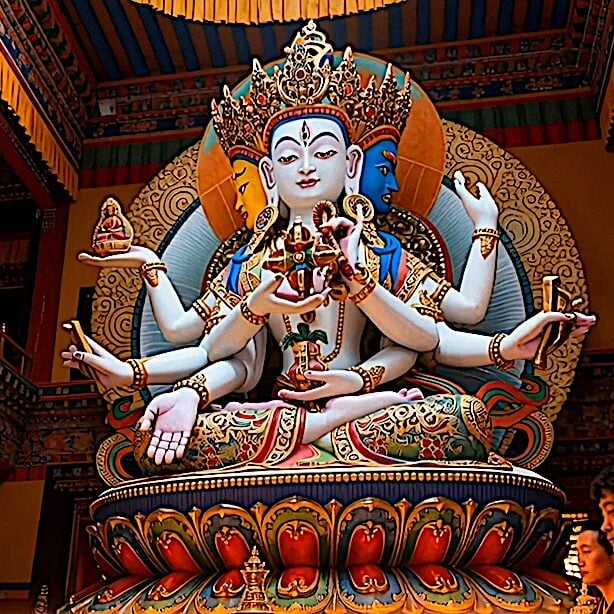
ON HEARING: Ushnisha Vijaya Dharani Overcomes Six Types of Suffering, Conquering the Lord of Death: Supreme in Six Realms
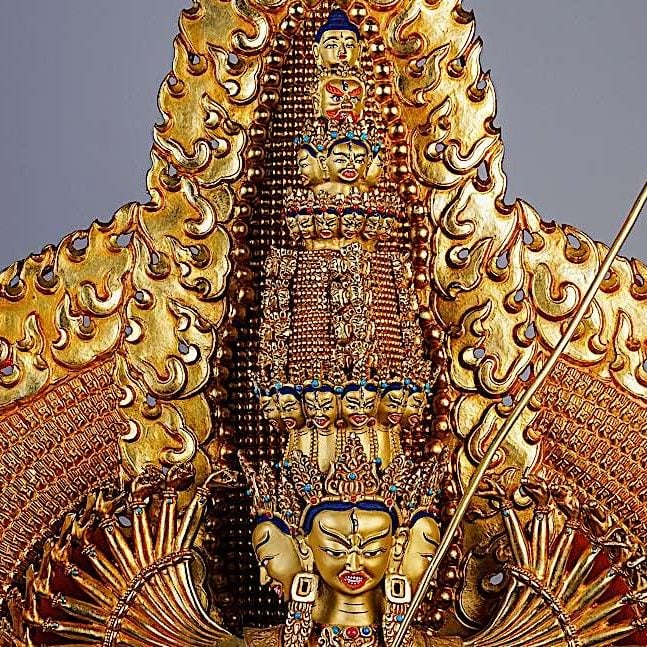
Sitatapatra or Dukkar — the ultimate protective Bodhisattva Goddess, form of Mother Tara — 1000 arms or 2 arms, she is “Aparajita” the Undefeatable One
Search
Latest Features
Please support the "Spread the Dharma" mission as one of our heroic Dharma Supporting Members, or with a one-time donation.
Please Help Support the “Spread the Dharma” Mission!
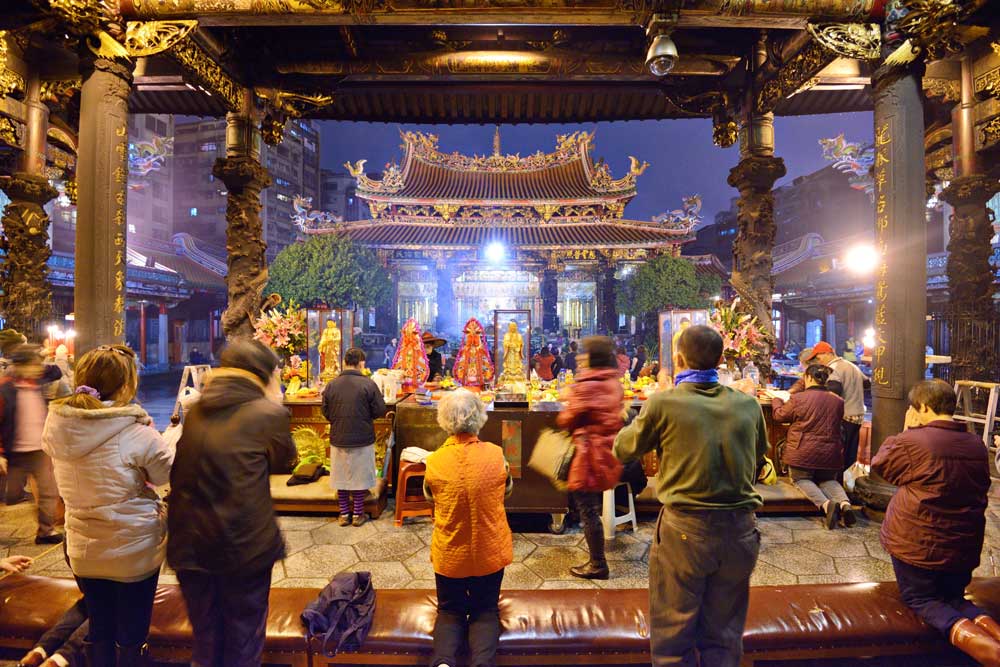
Be a part of the noble mission as a supporting member or a patron, or a volunteer contributor of content.
The power of Dharma to help sentient beings, in part, lies in ensuring access to Buddha’s precious Dharma — the mission of Buddha Weekly. We can’t do it without you!
A non-profit association since 2007, Buddha Weekly published many feature articles, videos, and, podcasts. Please consider supporting the mission to preserve and “Spread the Dharma." Your support as either a patron or a supporting member helps defray the high costs of producing quality Dharma content. Thank you! Learn more here, or become one of our super karma heroes on Patreon.
Lee Kane
Author | Buddha Weekly
Lee Kane is the editor of Buddha Weekly, since 2007. His main focuses as a writer are mindfulness techniques, meditation, Dharma and Sutra commentaries, Buddhist practices, international perspectives and traditions, Vajrayana, Mahayana, Zen. He also covers various events.
Lee also contributes as a writer to various other online magazines and blogs.

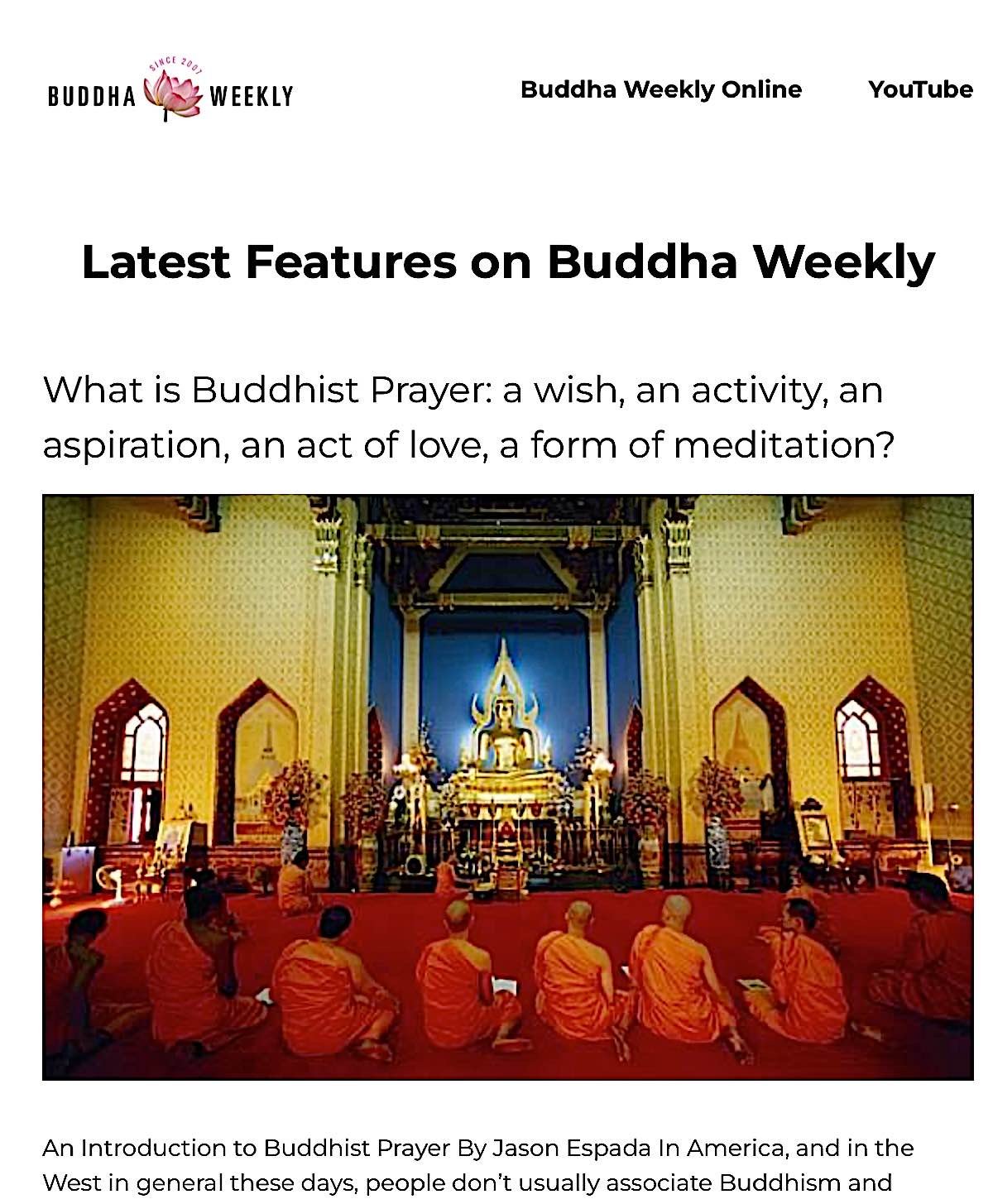





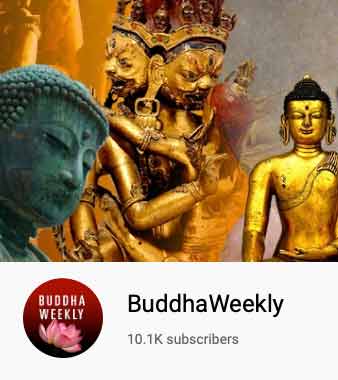


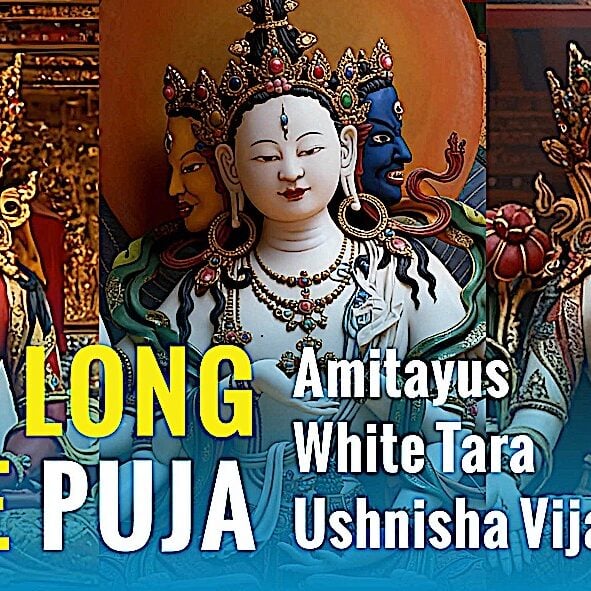




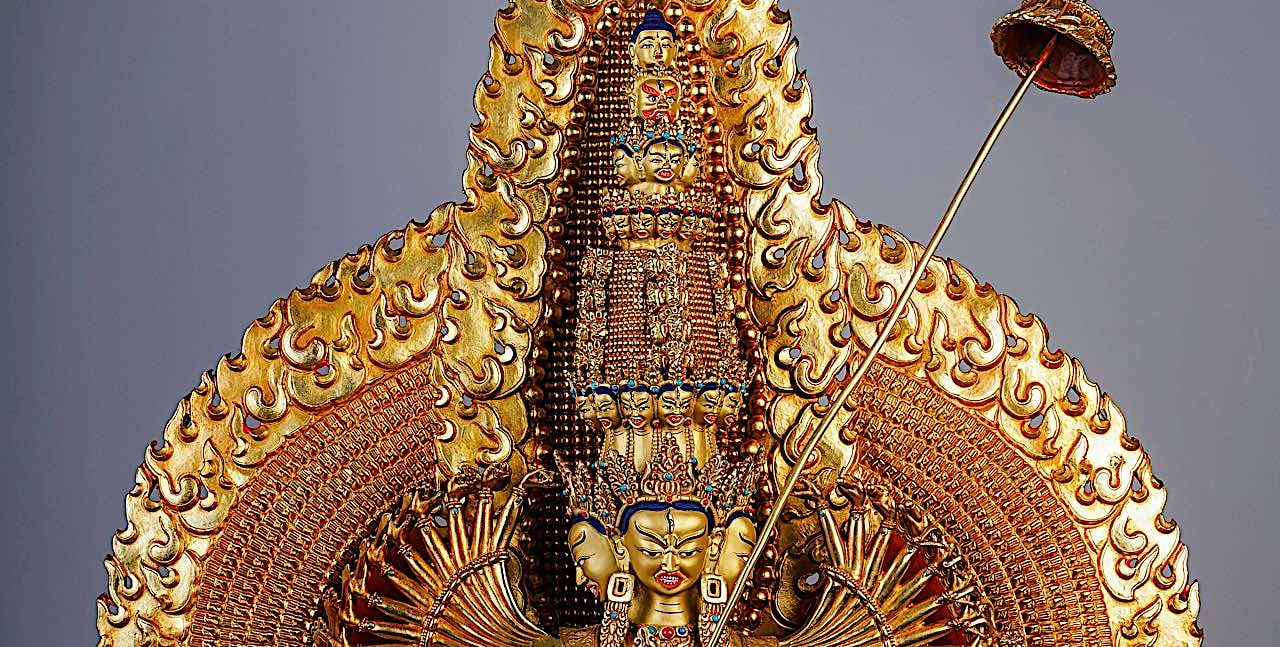
Thank you so much for sharing this beautiful article on Lama Tsongkhapa’s Enlightened Wisdom, Compassion, and Activity — it touched my heart deeply.
I feel grateful for the way it explains the Śrīmat Tsongkhapa Stutiḥ (Migtsema) and how it honors Lama Tsongkhapa as the embodiment of Avalokiteshvara (compassion), Manjushri (wisdom), and Vajrapani (power and activity). Every time I read or chant those praises, my devotion and inspiration deepen.
May all beings benefit from this teaching. Thank you again for bringing this luminous work to my attention.
Regards,
Antique Buddhas
https://www.buddhastatuesforsale.net